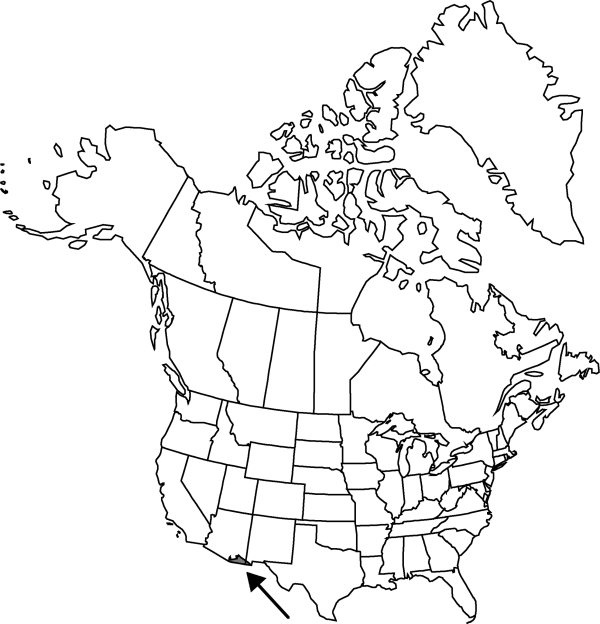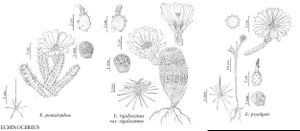Difference between revisions of "Echinocereus rigidissimus var. rigidissimus"
FNA>Volume Importer |
imported>Volume Importer |
||
| (One intermediate revision by the same user not shown) | |||
| Line 42: | Line 42: | ||
|publication year= | |publication year= | ||
|special status= | |special status= | ||
| − | |source xml=https:// | + | |source xml=https://bitbucket.org/aafc-mbb/fna-data-curation/src/2e0870ddd59836b60bcf96646a41e87ea5a5943a/coarse_grained_fna_xml/V4/V4_332.xml |
|subfamily=Cactaceae subfam. Cactoideae | |subfamily=Cactaceae subfam. Cactoideae | ||
|genus=Echinocereus | |genus=Echinocereus | ||
Latest revision as of 21:57, 5 November 2020
Plants unbranched (very rarely few branched). Stems erect, short cylindric, 6–18(–30) × 9–11 cm; ribs (15–)18–23(–26), crests slightly undulate; areoles 3–5 mm apart. Spines 15–23 per areole, all radial, straight or slightly curved toward stem, tightly appressed, pectinately arranged, bright pink or pink-and-white in alternating bands of color around stem, 6–10 mm. Flowers 6–8 × 6–9 cm; flower tube to 30 × 15–45 mm; flower tube hairs to 2 mm; inner tepals bright rose-pink or magenta, conspicuously white banded proximally, 40–50 × 10–15 mm, tips relatively thin, delicate; anthers yellow nectar chamber 3–5 mm. Fruits greenish or dark purplish brownish, 2.5–5 cm, pulp white. 2n = 22.
Phenology: Flowering late spring–summer (May–Jul); fruiting 3 months after flowering.
Habitat: Gravelly hills, steep canyonsides, semidesert grasslands, oak woodlands, interior chaparral, igneous substrates
Elevation: 1200-1600 m
Distribution

Ariz., N.Mex., Mexico (Chihuahua, Sonora).
Discussion
Echinocereus rigidissimus, lacking central spines, belongs to the E. reichenbachii group, unrelated to the superficially similar E. pectinatus group, which has at least microscopically visible stubs of central spines. It sometimes occurs with E. pseudopectinatus but without evidence of hybridization. The reported habitat preference for limestone (L. D. Benson 1969) is erroneous; this species is a calcifuge, preferring soils poor in lime and usually acid.
Selected References
None.
